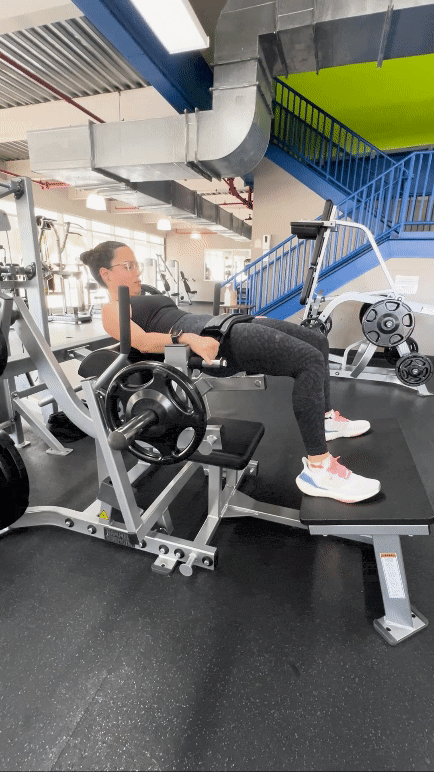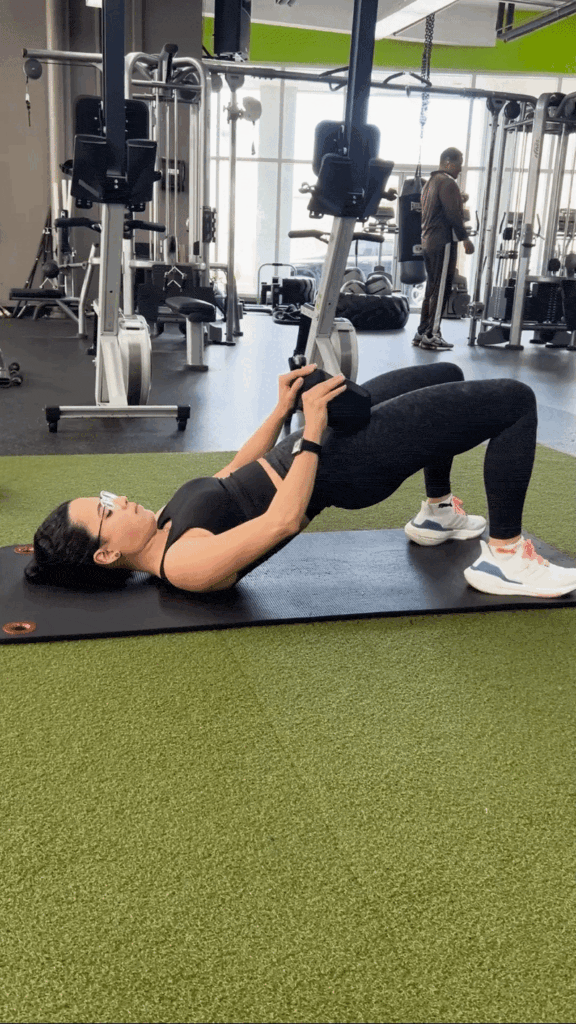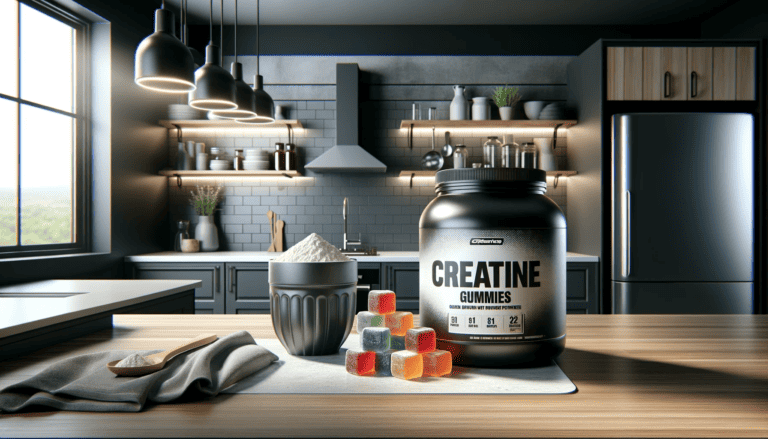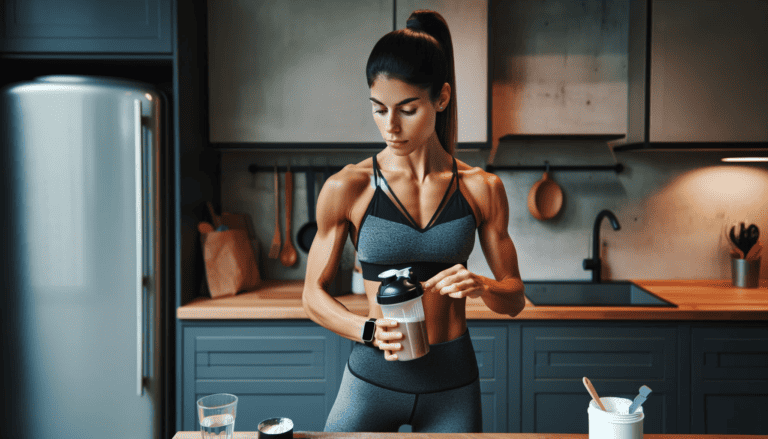5 Best Upper Glute Workout Exercises
Ever wondered what the secret is to a sculpted and perky booty? Well, look no further because the secret is a great upper glute workout.
Table of Contents
A killer upper glute game not only gives you that enviable ‘shelf-like’ booty but also brings a load of awesome perks. First, better posture – having a strong upper glute base is like having a built-in posture corrector. It lines up your hips and lower back, making you stand tall and proud. Second, strong upper glutes are the secret for explosive moves, think sprinting, jumping, and quick direction changes. Third, if you are having that annoying back pain, weak glutes could be the reason– the upper glute muscles, especially the gluteus medius, act like stabilizers for your pelvis and eases the stress on your lower back. But that’s not all believe it or not – the upper glutes are the secrete to keeping you steady and reducing the chances of clumsy falls and injuries.
So, now you see how a great upper glute workout can help you look, feel, and be better. Now get ready to learn the secrets that are not only going to help you build buns of steel but will help you understand the anatomical wonders that make it all happen. I will warn you this will get a little heavy but it’s just because I’m trying to give you all the scientifically juicy bits.
Glute gains, here we come!
Anatomy of the Gluteal Muscles: What Muscles Need to be Targeted During Upper Glute Workouts
Alright, so let’s talk about the gluteal muscles group – you know, those muscles that make your backside look fantastic. They consist of the gluteus maximus, medius, and minimus. Among them, are the upper glute region, which is the VIP section for our “shelf” and the muscles we need to target during the upper glute workout.
The upper glute region is mostly made up of the upper fibers of the gluteus maximus and gluteus medius. The gluteus maximus, the big guy, covers a significant portion of the buttocks and facilitates essential movements like hip extension and outward rotation, such as standing from a seated position. On the other hand, the gluteus medius, hanging out on the side of your pelvis, is indispensable for hip abduction and pelvic stability, with its upper fibers being particularly vital in maintaining equilibrium during activities like walking.
If you feel like looking further into this information go to sources like “Journal of Anatomy” and “Clinical Anatomy,” they provide detailed insights into the composition and functions of the gluteal muscles.
Common Mistakes Made During Upper Glute Workouts
To make the most out of upper glute workouts, it’s essential to be aware of common mistakes that can set you back on your progress.
First up is relying too heavily on momentum rather than engaging the muscles or what I like to call racing through your reps. Slow and controlled movements, as suggested by the Journal of Applied Physiology, are the real glute activators. Remember it’s not a race; with slower reps you might even reach failure faster.
Executing exercises with precision and proper form is important if you want to effectively target the upper glutes. This isn’t just about the aesthetics of exercising; it’s backed by scientific studies that highlight the significance of “anatomically correct” movements in maximizing muscle “activation” and hypertrophy. Research published in reputable journals like the “Journal of Strength and Conditioning Research” and “Medicine & Science in Sports & Exercise” have consistently shown that using proper form during exercises directly correlates with increased muscle activation and, subsequently, greater hypertrophy.
Additionally, improper body positioning, such as over-arching the lower back or allowing the knees to collapse inward, can divert the emphasis from the upper glutes. These mistakes not only compromise the effectiveness of the workout but may also lead to unnecessary strain or injury if you do not prepare your body for these “incorrect” movements. For example, over-arching your back during exercises like hip thrusts. Not only does it put unnecessary stress on your lower back, but it also takes the spotlight away from your upper glutes.
Last but not at all least the Half Rep Hustle. Skipping that full range of motion cheats your glutes out of the work they need. For optimal upper glute stimulation, it’s crucial to focus on exercises that engage the target muscles through their full range of motion, ensuring each movement is deliberate and controlled. Experts from the Strength and Conditioning Journal agree – full range of motion is the name of the game.
How many reps and sets for optimal upper glute workouts
When it comes to getting that shelf-like upper glutes, understanding the ideal rep and set ranges is super important. Hypertrophy, or the increase in muscle size, is the primary goal, and tailoring your workout to achieve this requires a strategic approach.
For hypertrophy in the upper glute muscles, the general consensus among fitness experts and researchers is to focus on moderate rep ranges with a moderate to high number of sets. A range of 8 to 12 repetitions per set is often recommended, with weight that gets you close to failure. This range ensures that the muscles are subjected to enough mechanical tension, metabolic stress, and muscle damage – the three primary mechanisms that contribute to muscle growth. Engaging in this rep range during exercises like hip thrusts, glute bridges, and leg press specifically targets the upper glutes, promoting hypertrophy.
Scientific studies have delved into the effectiveness of different reps and set schemes for hypertrophy. For instance, a study published in the “Journal of Applied Physiology” found that moderate rep ranges (8-12 reps) elicited greater muscle protein synthesis, a key indicator of muscle growth, compared to lower rep ranges. Additionally, the “European Journal of Sport Science” has documented that performing multiple sets, especially in the 3 to 5 set range, enhances muscle hypertrophy by providing an extended stimulus to the muscles.
Importance of Progressive Overload in Upper Glute Training:
While rep and set ranges are important, the concept of progressive overload plays a crucial role in upper glute training. Progressive overload involves gradually increasing the intensity of your workouts over time. This can be achieved by adding more weight, increasing the number of sets, or adjusting the rest intervals. A study in the “Journal of Strength and Conditioning Research” emphasizes the necessity of progressive overload, indicating that it is essential for continued muscle adaptation and growth. As the upper glute muscles become accustomed to a particular stimulus, progressively overloading the muscles ensures ongoing challenges, promoting sustained hypertrophy.
So, tailoring your upper glute workout for optimal growth involves focusing on the recommended rep and set ranges supported by scientific studies, at a weight that takes you close to failure for your active sets. Additionally, incorporating progressive overload into your training regimen ensures a continuous challenge for the upper glute muscles, facilitating long-term hypertrophy and overall development.
What are the Best Upper Glute Workouts
So here it is what you came for, to effectively sculpt and grow the upper glute region, incorporating a variety of exercises that specifically target the upper glutes is essential. Here, are some of the top exercises renowned for sculpting a shelf-like upper glute base:
1. Hip Thrusts:
Hip thrusts have gained significant popularity among fitness enthusiasts and athletes alike because they are amazing at activating and strengthening the gluteal muscles, particularly the upper glutes.

Scientific Support:
A study published in the Journal of Orthopaedic & Sports Physical Therapy (2015) compared various glute exercises and found that hip thrusts elicited the highest muscle activation in the gluteus maximus, especially the upper portion when compared to other common exercises like squats and deadlifts.
Biomechanics & Impact of Hip Thrusts:
The primary muscle activated during hip thrusts is the gluteus maximus, the largest muscle in the gluteal group. The predominant movement is at the hip joint, which extends as the hips move from a flexed position (bent) to an extended position (straight) during the upward phase of the thrust. The hip thrust movement pattern range of motion depends on flexibility and strength, and the goal is to achieve full hip extension. As the hips extend, the gluteus maximus contracts concentrically to drive the movement upward.
While the gluteus maximus is the primary mover, hip thrusts also engage the hamstrings to a significant extent. The hamstrings work synergistically with the glutes to extend the hips and stabilize the pelvis during the movement.
Proper execution of the hip thrust requires core stability to maintain alignment and prevent excessive arching or overarching of the lower back. Thus, the spine should remain neutral throughout the movement, with the head, neck, and spine forming a straight line from the shoulders to the hips. The core muscles will help with this, including the rectus abdominis, transverse abdominis, and obliques, engage isometrically to support the spine and pelvis.
Consistent incorporation of hip thrusts into a resistance training program can lead to significant hypertrophy (muscle growth) of the gluteal muscles, particularly the gluteus maximus. Hip thrusts are renowned for their ability to sculpt and shape the glutes, contributing to a rounder, firmer, and more defined appearance.
Proper Hip Thrust Form Guidelines:
- Begin by sitting on the floor with your upper back against a stable bench and a barbell resting across your hips.
- Roll the barbell over your legs and into the crease of your hips.
- Plant your feet firmly on the ground, hip-width apart.
- Engage your core and glutes as you press through your heels, lifting your hips towards the ceiling.
- Ensure a straight line from your shoulders to your knees at the top of the movement.
- Your knee angle should be 90º.
- Lower your hips back down under control and repeat for the desired number of repetitions.
2. Glute Bridges:
Glute bridges offer a simple yet effective way to target the upper glutes while also engaging the hamstrings and lower back muscles.\

Scientific Support:
While there is ample anecdotal evidence supporting the notion that glute bridges contribute to overall glute development, including the upper glutes, scientific research specifically isolating the upper portion of the glutes can be somewhat limited. However, studies examining glute activation and muscle recruitment during glute exercises can provide valuable insights into their potential impact on different regions of the gluteal muscles.
A study published in the Journal of Orthopaedic & Sports Physical Therapy (2016) compared the electromyographic (EMG) activity of the gluteal muscles during various exercises, including glute bridges. While the study did not specifically isolate the upper glutes, it found that glute bridges elicited significant activation of the gluteus maximus, suggesting that they engage the entire muscle, including the upper portion.
Biomechanics & Impact of Glute Bridges:
The glute bridge movement primarily involves hip extension, where the hips move from a flexed position to an extended position. Proper execution of the glute bridge requires the gluteus maximus to contract concentrically to lift the hips off the ground, which actively engages the gluteus maximus, particularly the upper fibers. Additionally, the stabilization required during the bridge helps improve core strength and overall stability.
It’s essential to recognize that individual anatomy, genetics, and training history can influence how muscles respond to specific exercises. While glute bridges target the entire gluteus maximus, some individuals may experience greater activation or growth in certain regions of the muscle, including the upper glutes, based on their biomechanics and neuromuscular patterns.
Proper Form for Glute Bridges:
- Begin by lying on your back on a comfortable exercise mat or on the floor. Bend your knees and place your feet flat on the ground, hip-width apart. Your arms should rest comfortably by your sides, palms facing down.
- Ensure that your head, neck, and spine are in a neutral position. Avoid arching or overarching your lower back. Engage your core muscles by gently drawing your belly button towards your spine to stabilize your torso.
- Position your feet so that they are directly under your knees, creating a 90-degree angle at the knees when you lift your hips.
- Press through your heels to lift your hips off the ground, engaging your glutes and hamstrings. Keep your weight centered on your heels and the balls of your feet throughout the movement.
- Continue lifting your hips until your body forms a straight line from your knees to your shoulders. Squeeze your glutes at the top of the movement to maximize muscle activation in the gluteal muscles.
- Keep your shoulders relaxed and pressed into the ground to maintain stability in your upper body. Avoid shrugging your shoulders or tensing your neck muscles during the exercise.
- Lower your hips back down to the starting position under control, maintaining tension in your glutes and hamstrings. Aim to achieve a full range of motion by lowering your hips until they lightly touch the ground before initiating the next repetition.
Breathing:
Inhale as you lower your hips towards the ground. Exhale as you drive through your heels to lift your hips and extend your hips upward.
3. Romanian Deadlifts:
Romanian deadlifts are renowned for their effectiveness in targeting the posterior chain, including the glutes, hamstrings, and lower back.

Scientific Support:
Research published in the Journal of Strength and Conditioning Research (2018) demonstrated that Romanian deadlifts activate the gluteus maximus to a significant extent, particularly during the eccentric (lowering) phase of the movement.
Biomechanics & Impact of the Romanian Deadlift:
While the Romanian deadlift primarily targets the hamstrings and lower back, it also significantly activates the gluteal muscles, including the upper glutes. Research suggests that the Romanian deadlift elicits high levels of muscle activation in the gluteus maximus throughout the movement, including the upper glutes. The controlled eccentric phase of the RDL allows for a deep stretch in the gluteal muscles, enhancing muscle recruitment and stimulating growth in the upper booty region. Here’s a closer look at the mechanics and impact of the Romanian deadlift, specifically concerning the upper booty:
Hip Hinge Movement:
The hip extension component of the RDL requires substantial activation of the glutes, particularly the upper portion of the gluteus maximus.
Stretching the Hamstrings and Glutes:
As the weight descends, you should feel a deep stretch in the hamstrings and glutes.The emphasis is on maintaining tension in the hamstrings and glutes throughout the eccentric (lowering) phase of the movement.
Proper Form For Romanian Deadlift or RDL:
- Stand with feet hip-width apart, holding a barbell or dumbbells in front of your thighs.
- Hinge at the hips while maintaining a slight bend in the knees, allowing the weight to lower towards the ground.
- Keep your back flat and chest lifted throughout the movement. Maintain your neck in a neutral position at all times.
- Engage your glutes and hamstrings as you return to the starting position by thrusting your hips forward.
4. Lunges:
Lunges are versatile exercises that not only target the glutes but also enhance balance, stability, and unilateral strength.

Scientific Support:
While there is a lack of specific scientific studies directly addressing the isolated growth of the “upper booty” through lunges, several pieces of research and biomechanical understandings suggest that lunges can contribute to overall gluteal development, including the upper glutes.
Here’s an overview. Research published in the Journal of Orthopaedic & Sports Physical Therapy (2015) investigated muscle activation patterns during various lower body exercises, including lunges. The study found that lunges elicited significant activation of the gluteus maximus, particularly during the eccentric (lowering) phase of the movement.
Lunges are dynamic lower body exercises that engage multiple muscle groups, including the quadriceps, hamstrings, calves, and glutes. While lunges primarily target the quadriceps, their biomechanics and execution can be optimized to emphasize engagement of the upper glutes.
Biomechanics & Impact of Lunges:
Here’s an exploration of the biomechanics and impact of lunges centered towards the upper booty:
Hip Extension:
Lunges involve a significant hip extension component, where the hip joint moves from a flexed position to an extended position as you push back up from the lunge position. During hip extension, the gluteal muscles, including the upper glutes, play a crucial role in driving the body upward.
Stabilization:
Lunges require stabilization of the pelvis and hips, which engages the gluteus medius and minimus, contributing to overall hip stability. Emphasizing balance and stability during lunges can help activate the upper glutes to a greater extent.
Range of Motion:
Lunges offer a wide range of motion, allowing for deep flexion of the hip and knee joints. Lowering the body into a deep lunge position can stretch the gluteal muscles, including the upper glutes, before engaging them to return to the starting position.
Variations for Targeting Upper Glutes:
Reverse Lunges: Stepping backward into a lunge can shift the emphasis towards the glutes, particularly the upper glutes, as they are more engaged in the hip extension phase.
Elevated Lunges: Performing lunges with the front foot elevated on a platform or step increases the range of motion and places greater emphasis on the glutes, including the upper glutes.
Proper Form For Lunges For Upper Glute Workout:
When centering on growing the upper glutes, proper form for lunges remains critical. Lunges engage various lower body muscles, including the glutes, hamstrings, and quadriceps. However, by emphasizing certain aspects of the lunge movement, you can target the upper glutes more effectively.
Here’s the proper form for lunges with a focus on growing the upper glute muscles:
- Stand tall with your feet hip-width apart and your shoulders pulled back.
- Engage your core muscles by drawing your belly button towards your spine.
- Take a step forward with one foot, ensuring that your front knee remains aligned with your ankle when you lower into the lunge. The length of your step should be such that when you lower into the lunge, your front thigh is parallel to the ground
- Plant your front foot firmly on the ground, ensuring that your entire foot is in contact with the surface.
- Your back foot should be on the ball of the foot, with the heel lifted slightly.
- As you lower into the lunge, focus on pushing your hips back and down. Keep your torso upright, with your chest lifted and your shoulders relaxed.
- Lower your body towards the ground by bending both knees, aiming to bring your front thigh parallel to the ground.
- Focus on engaging your glutes, particularly the upper glutes, as you descend into the lunge position.
- Ensure that your front knee stays aligned with your ankle and does not extend past your toes to prevent unnecessary strain on the knee joint.
- Your back knee should bend towards the ground, but avoid letting it touch the ground to maintain tension in the glutes.
- Push through the heel of your front foot as you return to the starting position.
Mind-Muscle Connection:
Visualize the muscles working as you lower into the lunge and push back up to standing.
Breathing:
Inhale as you lower into the lunge and exhale as you push back up to standing.
5. Cable Kickbacks:
Cable kickbacks offer a targeted approach to isolating the upper glutes, helping to enhance muscle definition and shape. By using a cable machine, you can maintain constant tension on the glutes throughout the entire range of motion, maximizing muscle activation.

Scientific Support:
Research conducted by the American Council on Exercise (ACE) revealed that cable kickbacks activate the gluteus maximus to a significant degree, making them an effective exercise for sculpting the upper glutes.
Biomechanics & Impact of Cable Kickbacks:
Cable kickbacks primarily involve hip extension, where the hip joint moves from a flexed position to an extended position. As you kick the leg backward against the resistance of the cable, the gluteus maximus, particularly its upper fibers, contracts concentrically to generate force and extend the hip.
Proper execution of cable kickbacks requires stabilization of the pelvis and core to maintain balance and control throughout the movement. Engaging the core muscles and stabilizers helps isolate the gluteal muscles, including the upper glutes, and prevents excessive movement or compensation from other muscle groups.
They also allow for a greater range of motion compared to other upper glute workouts, allowing you to achieve a deeper contraction in the upper glutes. Ensure that the movement originates from the glutes rather than the lower back.
The position of the foot and ankle can influence gluteal activation during cable kickbacks. Keeping the foot flexed (dorsiflexed) throughout the movement can help engage the glutes more effectively, especially the upper glutes, by providing a stable base for hip extension.
Research suggests that cable kickbacks elicit high levels of gluteal activation, especially in the gluteus maximus, making them an effective exercise for targeting this muscle group.
Proper Form For Glute Kickbacks:
- Begin by attaching an ankle cuff to a low cable machine and setting an appropriate weight.
- Face the cable machine and position yourself a few feet away, grasping onto the machine for stability. But make sure you are not facing down, keep your chest up, but your back neutral.
- Place the ankle cuff around one ankle and stand tall with a slight bend in your supporting leg.
- Initiate the movement by driving the cuffed leg backward in a controlled manner while maintaining a neutral spine.
- Focus on using the glutes to extend the hip joint, ensuring that the movement originates from the gluteus maximus rather than the lower back.
- Aim to achieve full extension of the hip joint while keeping the knee of the cuffed leg straight.
- Squeeze the glutes at the top of the movement to maximize muscle activation.
- Slowly lower the cuffed leg back to the starting position, maintaining tension in the glutes throughout the entire range of motion.
- Avoid allowing the weight to pull the leg back too quickly, as this can reduce muscle engagement.
So, glute enthusiasts, let this knowledge be the upper glute workout guide for your glute transformation. With scientifically-backed workouts, intentional form, and a holistic approach to fitness, you’re on the path to creating a mastercake. lol. Your upper glutes are not just muscles; they are the foundation of strength, power, and confidence. Embrace the journey, feel the burn, and invest in your well-being. Here’s to strong, sculpted glutes and the vibrant, empowered you!

